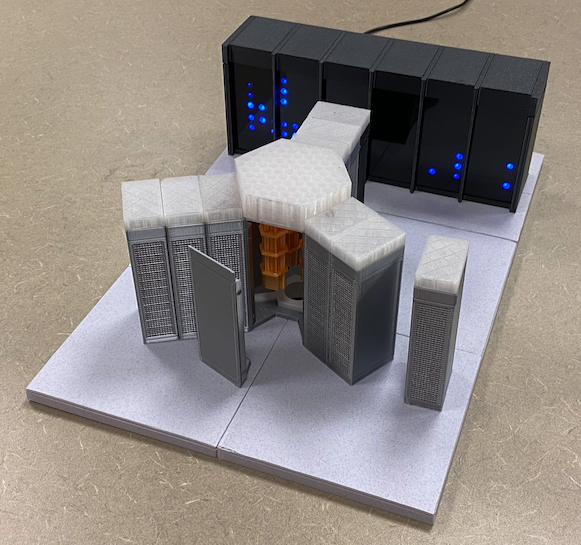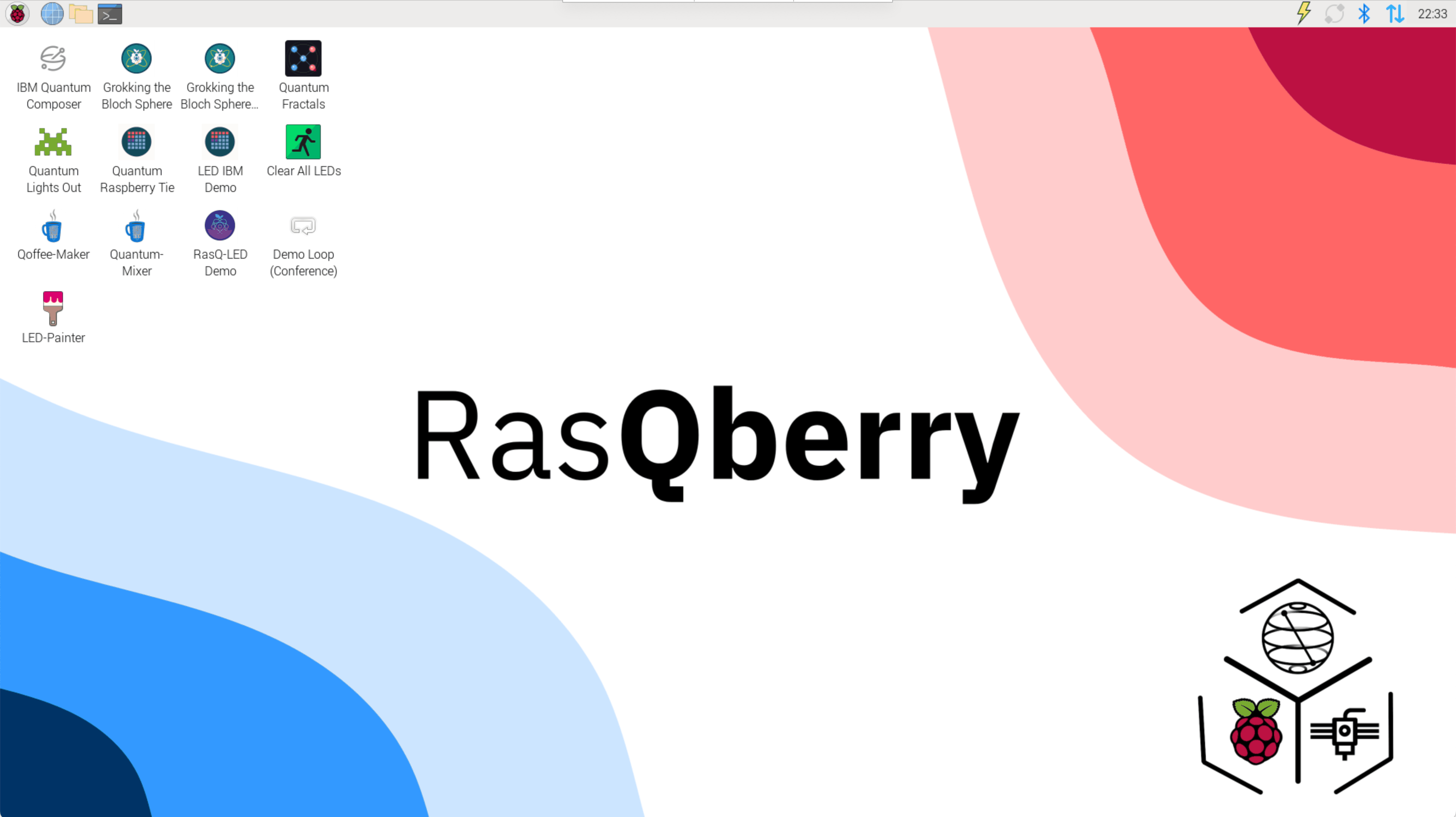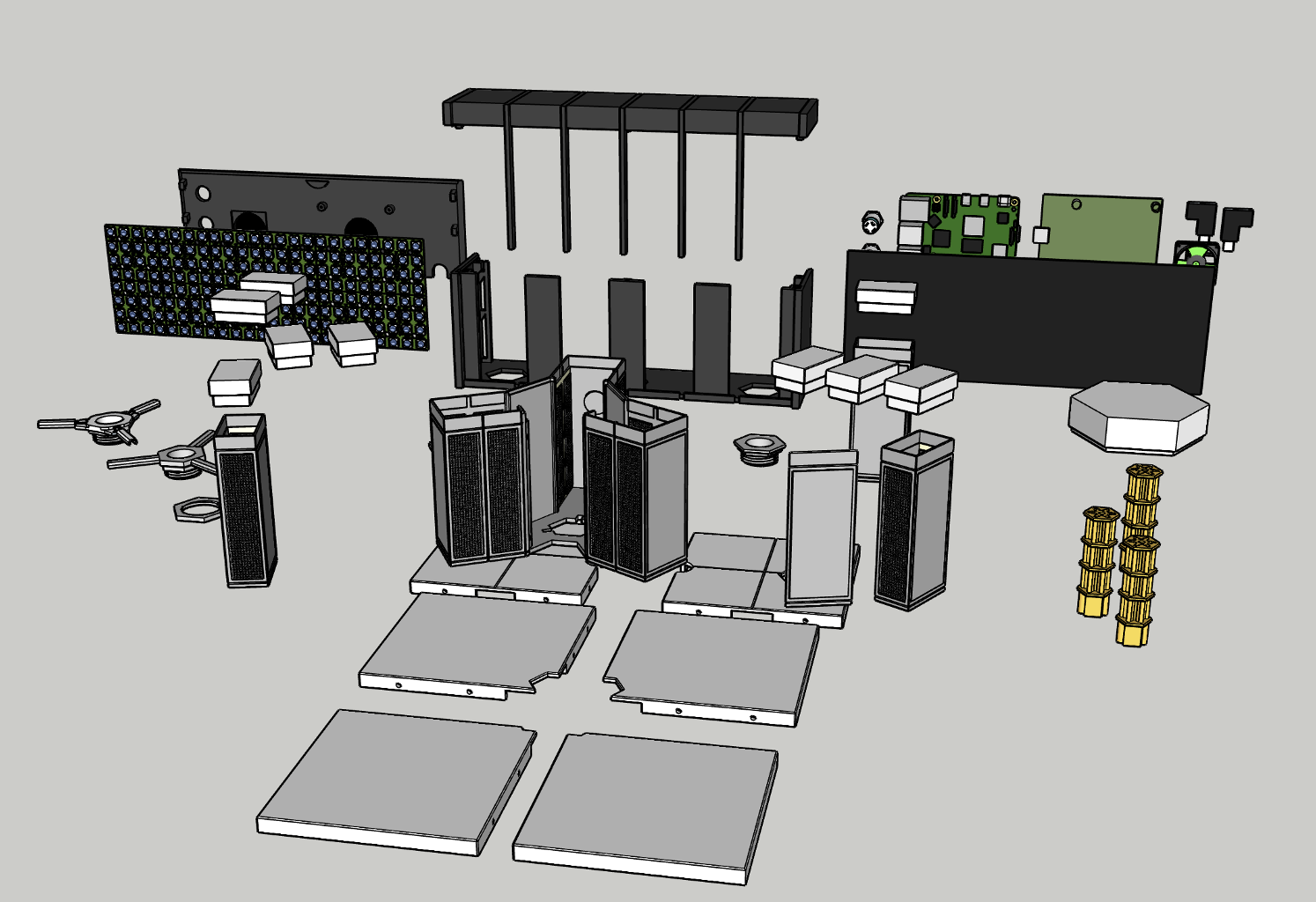RasQberry is a functional model of IBM Quantum System Two. It integrates Qiskit, a Raspberry Pi and a 3D printed model of IBM Q System Two to explore various state-of-the-art technologies and create a tool that can be used for education and in meetings, meetups, demo booths, etc. A spectrum of Quantum Computing demos and Serious Games for Quantum Computing (that illustrate e.g. superposition, interference and entanglement) will be made available on the RasQberry platform for an engaging introduction to Quantum Computing.
Note: If you are looking for the functional model of IBM Quantum System ONE, please go to https://rasqberry.one. Here is the new project, building a functional model of IBM Quantum System TWO, including several additional updates, e.g. 64-bit OS, Raspberry Pi 5, Qiskit 1.x, more Quantum Computing Demos, integration into raspi-config, etc.
See It In Action

3D-printed model inspired by IBM Quantum System Two
Demo video showing RasQberry Two beta with quantum computing demos

Interactive quantum computing demos - Bloch sphere visualization, quantum games, circuit composer, and fractal animations (slow-motion version)
Stay Updated
Follow our Announcements on GitHub Discussions for the latest news and updates.
Subscribe to our newsletter for occasional updates on new releases, quantum computing demos, and community news. We send not more than one email per month.
Getting Started
Option 1: Download Page
Visit rasqberry.org/latest/ to browse and download all available RasQberry images including stable, beta, and development builds.
After downloading, write the image to an SD card using Raspberry Pi Imager (no customizations needed), then boot your Pi.
Option 2: Run Pi Imager with RasQberry Repository
Run Pi Imager with our custom repository to see all RasQberry images directly in the imager:
macOS:
/Applications/Raspberry\ Pi\ Imager.app/Contents/MacOS/rpi-imager --repo https://RasQberry.org/RQB-images.json
Windows:
"C:\Program Files (x86)\Raspberry Pi Imager\rpi-imager.exe" --repo https://RasQberry.org/RQB-images.json
Option 3: Pi Imager Desktop Launcher (Recommended)
Install a pre-configured Pi Imager launcher that automatically loads RasQberry images:
macOS (one-line command):
curl -sSL https://rasqberry.org/install-rpi-imager-launcher.sh | bash
Windows (PowerShell as Administrator):
Set-ExecutionPolicy Bypass -Scope Process -Force; [System.Net.ServicePointManager]::SecurityProtocol = [System.Net.ServicePointManager]::SecurityProtocol -bor 3072; iex ((New-Object System.Net.WebClient).DownloadString('https://rasqberry.org/install-rpi-imager-launcher.ps1'))
This creates a "Pi Imager for RasQberry" launcher on your Desktop.
First Boot Setup
Once your RasQberry Two is running:
-
Connect via SSH or VNC (both work out of the box)
- Username:
rasqberry - Password:
Qiskit1!
- Username:
-
Explore Demos through the menu system:
- Run
sudo raspi-configand select the first menu item - Or use desktop icons to launch demos directly
- Note: Most demos require LED strips connected to GPIO pin 18
- Run
-
Report Issues at GitHub Issues
Note: Additional features, demos, and improvements are continuously being added. Check /latest/ for the newest releases.
Working with Qiskit
Qiskit comes pre-installed in the default virtual environment (RQB2).
Activate the environment:
source /home/rasqberry/RasQberry-Two/venv/RQB2/bin/activate
Check installed packages:
(RQB2) rasqberry@raspberrypi:~ $ pip list | grep qiskit
qiskit 2.0.1
qiskit-aer 0.15.1
qiskit-ibm-runtime 0.30.0
qiskit-qasm3-import 0.5.1
Note: Package versions shown are examples. Use
pip list | grep qiskitto see your current installation.
Building the RasQberry 3D Model
STL files for the 3D-printed model are available in the 3D-model branch. The model consists of several printed parts that assemble together to create the complete RasQberry Two enclosure.

Exploded view showing all 3D-printed components
For detailed assembly instructions, see the Hardware Assembly Guide.
Contributing
RasQberry is an open-source educational project. We welcome contributions:
- Test & report issues - Try RasQberry and report bugs
- Share ideas & feature requests - Open a GitHub Discussion or issue
- Improve documentation - Fix typos or add troubleshooting tips using the "Edit this page on GitHub" link on each page
- Create quantum demos - Build new interactive demonstrations
Get Started: Visit our Contributing Guide to learn more.
Need Help?
Try our AI-powered documentation assistant based on Google NotebookLM to ask questions about RasQberry setup, demos, and troubleshooting (login with your Google ID required).
